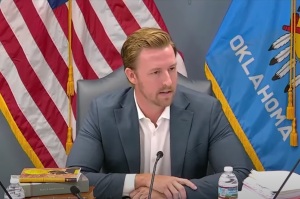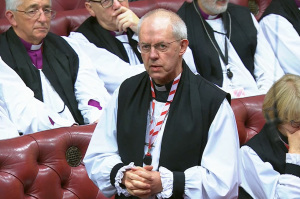Unlocking the Key to Megachurch Success
The number of megachurches is growing at a ''45-degree angle,'' and according to a top mega-church researcher at Hartford seminary, sheer size is not the reason why.
The number of mega-churches in America is growing at a ''45-degree angle,'' and according to a top mega-church researcher at Hartford seminary, sheer size is not the reason why.
“They are intentional about training and they find ways to make people from being a casual visitor to being a committed member,” said Scott Thumma, a professor of sociology at Hartford Seminary. “This is what we should be doing.”
In contrast, smaller churches often “don’t have the same attitude” about intentional evangelism. “They think people will just understand what Christianity is about, but that doesn’t work in American society.”
Thumma began his research at the Hartford Institute for Religion Research in 1988, and has since collected data on over 800 mega-churches across America. Last month, Thumma launched the most vigorous survey of America’s mega churches – he says there are probably 1,500 now – through which he hopes to learn more about the rapidly growing phenomenon.
“Much of what is said about [mega churches] is from speculation or experience drawn from visits to certain ones, and that’s only partially what this survey is about,” said Thumma, who conducted a similar survey 5 years ago. “We are interested in knowing whether this phenomenon has changed in the last five years, and how quickly they changed.”
Thumma believes this ability to change and adapt to the culture is one of the key reasons why mega churches continue to grow.
“Our society has shifted to feeling comfortable with large-scale institutes like food warehouses and universities of 30-40 thousands. When you live in a world like that, going to a 40-member church feels less congruent to living in a contemporary society.”
Another adaptation “of course” is the use of contemporary music. Thumma says the use of video and computer graphics help the church be more relevant to the American culture.
“One of the studies we did found that church growth was strongly related to the use of electric guitars,” he said. “It’s not surprising that megachurches have a full worship band with drums, guitars and an electric keyboard.”
However, these are merely “additions.”
Thumma says the mega-church model will likely be mimicked in the future, not only for their size or their cultural relevance, but also for their desire to fulfill the holistic needs of a member.
“The switch between the regular church and the megachurch is that the regular church is basically a Sunday experience,” said Thumma. “That’s absolutely not the operation of the mega church.
“The mega church is a seven-day-a-week church, and it’s there to fulfill the whole range of needs of human beings – not just the spiritual needs,” he said.
For example, some churches have gymnasiums, food courts, schools, and divorce-care problem centers, as well as the usual worship center, prayer room and chapel.
The Brentwood Baptist Church in Houston is a case in point. The church is the first in the nation to have a McDonald’s franchise on its ground. The franchise is located inside one of the church’s building, which also houses a basketball court, an aerobics studio, a computing center, an arcade, a banquet hall and more than 60 classrooms.
“The mega-church addresses all aspects of life,” Thumma said.
However, Thumma noted, not everyone is going to buy into this mega-church model.
“There is not a lot of boundaries from going in and out of the mega church – that boundary is fluid,” he said. “You don’t have to put on special clothes to go to church and you don’t even have to bring money to put in the offering plate. It makes it relatively easy to wander-in if you’re a seeker, but some are not convinced that this is the right way.
“Not every church will go the way of the mega-church, and different people resonate with different things,” he said.
Which is why in his 15-years of research, Thumma was able to find one solid pattern.
“Basically I’ve only found two types of people: those who love megachurches, and those who hate it. They either take it, or leave it.”





























